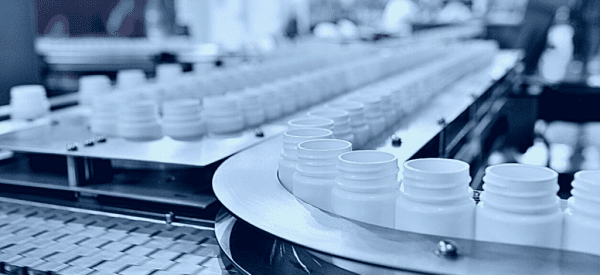
7 Challenges of Automating Metrology & Inspection and How to Overcome Them | Verus Metrology Partners Blog
The automation of metrology and inspection brings a range of benefits, from speeding up inspection processes to minimising errors to moving resources away from manual and repetitive tasks to those that are more value-adding to the business.
These benefits make metrology and inspection automation essential for forward-thinking manufacturers, including medical device manufacturers. However, while there are benefits, it’s also important to address the challenges of automation.
This involves fully understanding the existing challenges and implementing strategies and initiatives to overcome them.
This Verus Metrology Partners blog will explore those challenges as they apply to the medical device industry. However, much of the information applies to manufacturers in any industry considering enhancing metrology and inspection automation levels.
Challenge 1: The Suitability of Inspection Automation in the Medical Device Industry
In some respects, the medical device industry is the ideal candidate for automating inspection and metrology as most facilities operate high-speed, high-volume production lines.
The efficiency and productivity gains realised through automation are amplified on high-speed, high-volume production lines as automation solutions can bring the speed of inspection processes closer to the speed of production lines. Automation can also increase the number of products inspected in a batch, improving the reliability of inspection processes and the data produced.
That said, concerns exist regarding the suitability of automated inspection in the medical device industry. The main problems include the following:
- Do robotic arms have the level of dexterity needed to load and unload components into metrology fixtures, and can the required tolerances be achieved?
- The polymers and other materials used in medical device manufacturing and how they can change during and immediately after the manufacturing process. For example, a product or component made from plastic will reduce in size as it cools in the hours after it has been manufactured.
- Environmental conditions in medical device manufacturing facilities, including cleanrooms, and how those conditions impact products and components throughout manufacturing and quality processes.
- Regulatory concerns and whether automated inspection routines and solutions can ensure ongoing compliance.
- Product quality and patient safety concerns and whether the risks in these two areas will increase due to automation technologies.
Solution
If we start with the loading and unloading components, robotics technologies have advanced considerably over recent years to the point that dexterity capabilities match those of people. Metrology fixtures can also be designed to accommodate robotic loading and unloading.
There are solutions for materials and environmental concerns, including measuring products in a batch against a golden sample.
The leading solution to this challenge, however, is to ensure that your inspection automation journey’s next steps (or first steps) are fully controlled. For example, you don’t need to move immediately to full-scale in-line multi-stage automated inspection. Rarely will this be the recommended approach?
Instead, you can automate part of an inspection workflow within the controlled environment of your quality lab. For example, you were implementing a multi-station metrology fixture so your CMM can inspect multiple components one after the other without the need for an operator to load up each one.
Another example is to use auto-rotational fixtures that automate steps that an operator currently completes.
As these solutions prove effective and start delivering benefits and returns on investment, you can begin planning the next project, gradually increasing levels of automation while bringing all stakeholders with you.
Finally, a significant part of the solution to this challenge is difficult in itself, as it is about mindset. In other words, decision-makers willingness to place at least the same level of trust in a technology solution as they do in operators.
Challenge 2: Reluctance to Change
The uncertainty of the unknown can lead to a resistant reaction from the employees. Especially in medical device facilities, there is a lot at stake with metrology and inspection processes. Errors can lead to compliance problems that can be time-consuming and costly to resolve. Errors in inspection processes can also have patient safety implications that can lead to expensive recalls, reputational damage, and regulatory/legal penalties.
As a result, it is not surprising there can be a reluctance to change in the medical device industry. Why would you risk changing it if an existing inspection workflow works and is both repeatable and reproducible?
Even when presented with an automation solution that can be demonstrated as being effective, there can still be a reluctance to change as there is no certainty that it will work in the specific circumstances that exist in your manufacturing facility, i.e., it might be a proven technology, but it is not proven locally.
Solution
Given that it can be natural to resist change, we want to focus on building confidence to overcome that initial resistance. You can start small and controlling ways to prove the concept, build confidence, and generate a return on investment.
It is also helpful to build a business case for metrology and inspection automation solutions to ensure senior decision-makers fully understand the benefits, potential rewards, risks, and risk mitigation plans.
Providing metrology training can be beneficial, too, as it brings fresh perspectives and ideas that have worked for other companies.
Challenge 3: External Expertise Availability
Multiple metrology solution providers offer automation services. The challenge for manufacturers in the MedTech industry is identifying a solution provider with medical device manufacturing and inspection experience, knowledge, and expertise.
After all, automating inspection routines for a small and highly intricate medical device product manufactured from polymers differs from inspecting significant engine components in the automotive or aerospace industries.
Solution
The solution to this challenge is to work with a metrology services provider with direct knowledge and experience in the medical device industry. Get information on any other medical device companies the provider has worked for, get examples of how it has improved inspection processes, and find out about the results that were achieved.
Challenge 4: In-House Expertise and Resource Availability
Automation solutions not only reduce resource requirements, but also change resource requirements. With automated metrology and inspection processes, you will need operators with refined skills that may not currently be available. These people take time to recruit and train before they reach peak productivity levels.
Solution
There are two aspects to the solution for this challenge:
- Reduced resource requirement – the first point is that automating inspection processes means you will need fewer operators. This is especially beneficial in MedTech, as resource availability is a continuous challenge in the industry.
- Training is the main solution to this challenge whether recruiting or training your existing team, upskilling your staff will enable the successful implementation of your automated inspection solution.
Challenge 5: Learning Curve Concerns
The solution to the previous point brings us to the next challenge – concerns around the learning curve and the impact that knowledge gaps will have on inspection processes while training takes place.
Solution
The steps to mitigate this concern with automated inspection solutions include:
- Plan in advance – Staff training should be part of the early planning stage of your automation project. The ideal situation is that your staff are trained before the new solution is installed and commissioned, so everyone can hit the ground running.
- Get relevant training – your operator’s and technicians’ training should be tailored to your workflows, CMMs, and products.
- Partner with an expert training provider – your training provider should have direct experience in training quality department staff in medical device production facilities.
- Ensure you have ongoing support – it is also important that your team has a resource it can call on whenever additional expert support is required.
Challenge 6: Integration and Implementation Concerns
This concern largely revolves around the ability to implement the new automation solution with minimal impact on manufacturing throughput or quality processes. For example, will the automated solution seamlessly align with existing manufacturing and quality processes?
Compatibility issues can also be a concern. For example, can the automated solution be properly integrated with your MES or ERP system to ensure the smooth transfer of data?
Solution
Again, partnering with a metrology services provider with automation and medical device experience is essential. Your metrology partner should also have a proven track record and robust processes that include full off-site testing to eliminate issues before the automated solution reaches your facility.
We can again use Verus Metrology Partners as an example, as we have CMMs from multiple vendors in our metrology labs. This enables us to, for example, design and manufacture a new auto-rotational metrology fixture, create a new CMM programme, and then test the complete solution on the same CMM that is in our customer’s facility. This approach makes the integration and implementation of the solution as seamless as possible.
Challenge 7: Scalability and Flexibility Concerns
What happens if the product undergoes a design change that impacts the inspection workflow? What if a manufacturing process changes or a new product is introduced to the production line? What if production needs to be scaled up to meet increasing customer demand?
Can the automated inspection solution adapt to meet the new requirements in all these situations?
Solution
The solution is to plan for eventualities like these from the start of the process. This involves considering all the potential changes that could occur, from design changes to NPIs, before future-proofing the automation solution as much as possible.
Where changes to automated inspection workflows are needed, the process of making those changes should be considered and, where possible, tested.
Conclusion: Creating the Conditions for Automated Metrology and Inspection
Automating metrology and inspection in the medical device industry is possible with a forward-thinking mindset, a step-by-step approach, the right expertise, and comprehensive planning. This will reduce the risks of automation projects while overcoming the challenges.
We can help at Verus Metrology, mainly if you are a manufacturer in the medical device industry. Contact us today to speak to a member of our team.
Read more news from Verus Metrology here.
![]()
Verus Metrology Partners
+44 (0) 115 967 7807
Website
Email





